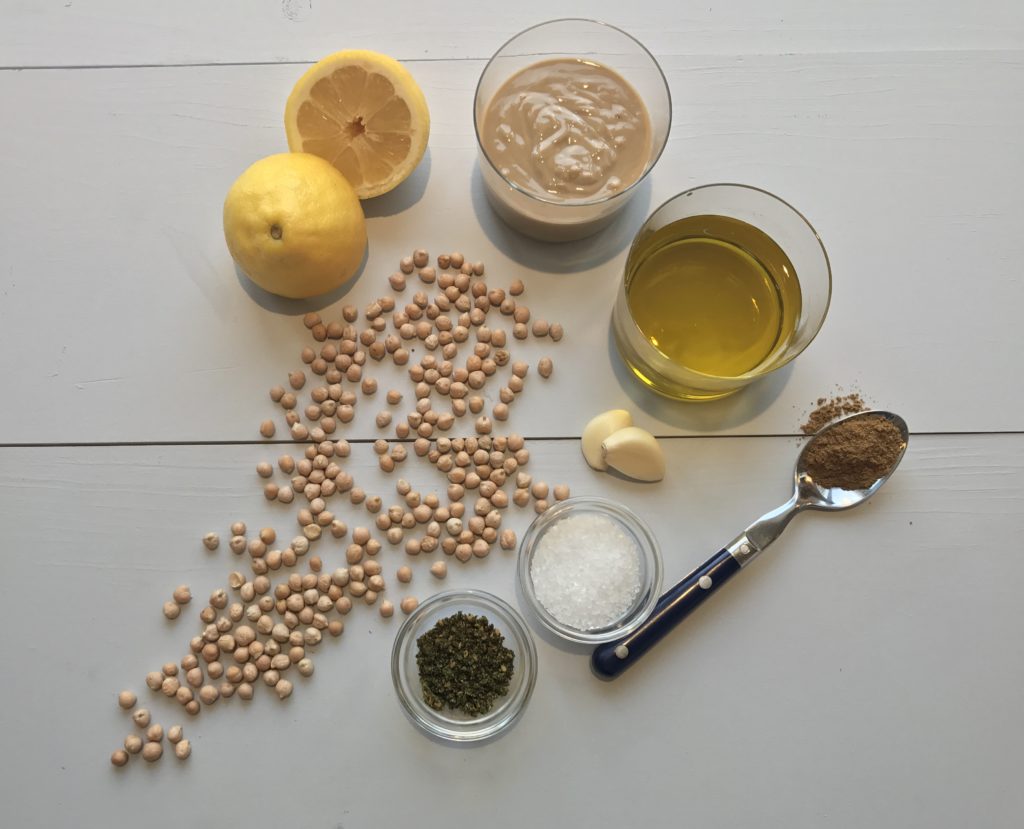Before I visited Israel in April, I was content with eating store-bought hummus. It was so easy. You just head to the store, buy a container of the flavor you like, tear back the plastic wrapping and place it on a platter with pita or vegetables.
My how things have changed!
After experiencing a hummus tasting and learning about its relevance in Israeli cuisine, I will never be satisfied with store-bought hummus again.
Israelis are obsessed with their hummus; and now so am I. They eat it morning, noon, and night. They eat it with pita, with veggies, with crackers. They eat it spread on shawarma, smeared on sandwiches and kebabs. They eat it with falafel, with seafood – they eat it with just about everything. And it’s no wonder; as a great source of vegetable protein and dietary fiber, it’s an excellent addition to their diet.

Hummus is not just an afterthought for them. Not something they pick up at the store only because it caught their eye. It’s part of their culture, their traditions.
To experience it, our guide in Israel took us to one of the best hummus restaurants in Jerusalem, nestled inside a market just a stroll from the Jaffa gates.


We ate two kinds of hummus and savored the differences. One was smooth and creamy and the other had texture, with whole chickpeas as garnish. As we scooped them both onto pieces of pita and fresh vegetables, we learned about how they make and enjoy it. I had never tasted freshly made hummus before this, and the difference between it and store-bought is night and day.
To start, Israeli hummus is served warm or at least at room temperature. Hummus should never be eaten cold, and I shudder at the thought of the many times I’ve made that mistake. Another difference is that every restaurant and home cook in Israel uses dried chickpeas, not canned, which imparts a silky and luxurious flavor to their hummus. And last, Israelis only use fresh tahini, a key ingredient that makes their hummus as light and airy as clouds. You can buy fresh tahini anywhere in Jerusalem, and before you think you’re at a loss, you can buy it here in the States, too. A great online source is Soom Tahini.
Back in New York City and armed with my newfound knowledge, I needed to make my own hummus so that I could experience the delicious beauty of it once more, and share the experience with you.
I took my recipe right out of the Ottelenghi cookbook, Jerusalem, although when I watched the video I have of it being made by our guide in Israel, I realized that it is exactly the same.
A few notes to keep in mind. The dried chickpeas I bought in Israel are smaller than the ones I usually see in our markets, so when you’re shopping, try to find smaller chickpeas and make sure they are fresh. Worst case, you can buy them online. Also, you will add a bit of baking soda to the boiling water. This turns the water alkaline so that the chickpeas cook faster. I will warn you, though, it does take a little extra time to make this hummus overall because of the dried chickpeas, but it is so worth it! The result is creamy and rich and a completely different experience than store-bought.
I hope you will make it yourself; it’s a heck of a lot easier than making the trip to Israel!
Ingredients
- 1 1/4 cups dried chickpeas
- 1 teaspoon baking soda
- 6 1/2 cups water
- 1 cup plus 2 tbsp light tahini paste
- 4 tablespoons freshly squeezed lemon juice
- 4 cloves garlic, crushed
- 6 1/2 tablespoons ice-cold water
- 2 teaspoons salt
Instructions
- The night before, put the chickpeas in a large bowl and cover them with cold water at least twice their volume. Leave to soak overnight.
- The next day, drain the chickpeas. Place a medium saucepan over high heat and add the drained chickpeas and baking soda. Cook for about 3 minutes, stirring constantly. Add the water and bring to a boil. cook, skimming off any foam and any skins that float to the surface. The chickpeas will need to cook between 20 and 40 minutes, depending on the type and freshness, sometimes even longer. Once done, they should be very tender breaking up easily when pressed between your thumb and finger, almost but not quite mushy.
- Drain the chickpeas. You should have roughly 3 2/3 cups now. Place the chickpeas in a food processor and process until you get a stiff paste. Then, with the machine still running, add the tahini paste, lemon juice, garlic, and 1.5 tsp salt. Finally, slowly drizzle in the iced water and allow it to mix for about 5 minutes, until you get a very smooth and creamy paste.
- Transfer the hummus to a bowl, cover the surface with plastic wrap, and let it rest for at least 30 minutes. If not using straightaway, refrigerate until needed. Make sure to take it out of the fridge at least 30 minutes before serving.